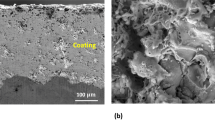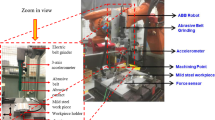Abstract
The relevant literature on machining operations selection in Computer-Aided Process Planning (CAPP) by decision trees, expert systems and neural networks has been reviewed, highlighting their contributions and shortcomings. This paper aims at contributing to the applicability of back-propagation neural network method for the selection of all possible operations for machining rotationally symmetrical components, by prestructuring the neural network with prior domain knowledge in the form of heuristic or thumb rules. It has been achieved by developing two forms of representation for the input data to the neural network. The external representation is used to enter the crisp values of the input decision variables (namely the feature type and its attributes such as diameter or width, tolerance and surface finish). The purpose of internal representation is to categorize the above crisp values into sets, which correspond to all the possible different ranges of the above input variables encountered in the antecedent ‘IF’ part of the thumb rules mentioned above. The input layer of the neural network has been designed in such a way that one neuronal node is allocated for each of the feature types and the sets of various feature attributes. In the output layer of the neural network, one neuronal node is allocated to each of the various feasible machining operation sequences found in the consequent ‘THEN’ part of the thumb rules. A systematic method for training of the neural network has been presented with the above thumb rules used to serve as guidelines for choosing the input patterns of the training examples. This method simplifies the process of training, reduces the time for preparation of training examples and hence the time to develop the overall process planning system. It can further help ensure that the entire problem domain is represented in a better manner and improve the quality of response of the neural network. The example of an industrially-relevant rotationally symmetrical workpiece has been analyzed using the proposed approach to demonstrate its potential for use in the real manufacturing environment. By this novel methodology, workpieces of complex shapes can be handled by investing a very limited amount of time, hence making it attractive and cost effective for industrial applications.
Similar content being viewed by others
References
J.G. Bralla (1986) Handbook of product design for manufacturing: A practical guide to low-cost production McGraw-Hill New York, USA
C.R. Devireddy T. Eid K. Ghosh (2002) ArticleTitleComputer-aided process planning for rotational components using artificial neural networks International Journal of Agile Manufacturing 5 IssueID1 27–49
C.R. Devireddy K. Ghosh (1999) ArticleTitleFeature-based modeling and neural networks-based CAPP for integrated manufacturing International Journal Computer Integrated Manufacturing 12 IssueID1 61–74 Occurrence Handle10.1080/095119299130470
G. Halevi R.D. Weill (1995) Principles of process planning: a logical approach Chapman and Hall UK
B. Jiang H. Lau F.T.S. Chang H. Jiang (1999) ArticleTitleAn automatic process planning system for the quick generation of manufacturing process plans directly from CAD drawings Journal of Materials Processing Technology 87 97–106 Occurrence Handle10.1016/S0924-0136(98)00337-9
B. Khoshnevis W. Tan (1995) ArticleTitleAutomated process planning for hole-making American Society of Mechanical Engineers.Manufacturing Review 8 IssueID2 106–113
Knapp, Gerald M., & Wang, H. (1992). Neural networks in acquisition of manufacturing knowledge. In A. Kusiak (Ed.), Intelligent design and manufacturing, New York: Wiley Sons Inc.
Neuframe Version 4. (2000). Getting started manual. Southampton, UK: Neusciences Intelligent Solutions.
A. Radwan (2000) ArticleTitleA practical approach to a process planning expert system for manufacturing processes Journal of Intelligent Manufacturing, 11 75–84 Occurrence Handle10.1023/A:1008956125515
L. Sabourin F. Villeneuve (1996) ArticleTitleOMEGA, an expert CAPP system Advances in Engineering Software 25 51–59 Occurrence Handle10.1016/0965-9978(95)00085-2
K. Wang (1998) ArticleTitleAn integrated intelligent process planning system (IIPPS) for machining Journal of Intelligent Manufacturing 9 503–514 Occurrence Handle10.1023/A:1008832101792
H. Wang J. Li (1991) Computer-aided process planning Elsevier Science Publishers B V Amsterdam, Netherlands
T.N. Wong S.L. Siu (1995) ArticleTitleA knowledge-based approach to automated machining process selection and sequencing International Journal of Production Research 33 IssueID12 3465–3484
Author information
Authors and Affiliations
Corresponding author
Additional information
Received: June 2005 / Accepted: January 2006
Rights and permissions
About this article
Cite this article
Deb, S., Ghosh, K. & Paul, S. A neural network based methodology for machining operations selection in Computer-Aided Process Planning for rotationally symmetrical parts. J Intell Manuf 17, 557–569 (2006). https://doi.org/10.1007/s10845-006-0026-0
Issue Date:
DOI: https://doi.org/10.1007/s10845-006-0026-0




